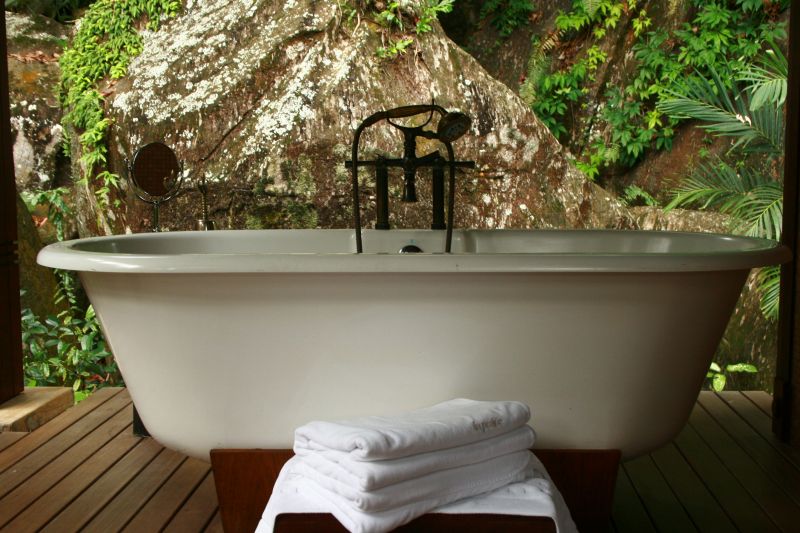Expert Picks For High-Quality Bathtub Resurfacing Products
Find out which products professionals recommend for achieving a flawless, durable finish on your bathtub surface.
 Bathtub resurfacing products offer a practical solution for renewing the appearance of worn, stained, or outdated bathtubs without the need for full replacement. These products typically include coatings, paints, or refinishing kits designed to adhere to existing surfaces and restore a smooth, glossy finish. When selecting a resurfacing product, it's important to consider factors such as ease of application, drying time, durability, and compatibility with various bathtub materials. Many formulations are designed to withstand daily use, resisting chipping, staining, and moisture infiltration, which helps prolong the lifespan of the refinished surface.
Bathtub resurfacing products offer a practical solution for renewing the appearance of worn, stained, or outdated bathtubs without the need for full replacement. These products typically include coatings, paints, or refinishing kits designed to adhere to existing surfaces and restore a smooth, glossy finish. When selecting a resurfacing product, it's important to consider factors such as ease of application, drying time, durability, and compatibility with various bathtub materials. Many formulations are designed to withstand daily use, resisting chipping, staining, and moisture infiltration, which helps prolong the lifespan of the refinished surface.
Top Overall Option
Epoxy Resin Bathtub Refinishing Kit
This epoxy resin-based refinishing kit offers a strong, durable finish suitable for various bathtub surfaces. It provides a high-gloss, smooth appearance and is designed to resist moisture, stains, and chipping when properly applied. Ideal for DIY enthusiasts, it typically includes all necessary components such as primers, rollers, and sealants to facilitate a comprehensive restoration process.
Types of Products For Bathtub Resurfacings
Epoxy Coatings
Epoxy coatings create a hard, glossy surface that adheres well to various materials and offers excellent resistance to moisture and stains.
Acrylic Paints
Acrylic-based paints are easy to apply and dry quickly, providing a smooth finish suitable for minor surface refreshes.
Refinishing Kits
Complete refinishing kits typically include primers, topcoats, and application tools designed for a comprehensive bathtub makeover.
Spray-On Resurfacers
Spray-on products allow for a quick and even application, ideal for covering large areas with minimal brush marks.
Urethane Coatings
Urethane coatings offer flexibility and durability, resisting chipping and cracking over time.
Polyurethane Finishes
Polyurethane finishes provide a clear, protective layer that enhances the surface's gloss and longevity.
Chalk-Based Paints
Chalk-based paints give a matte, vintage look and are suitable for decorative or distressed finishes.
Silicone Sealants
Silicone sealants are used to seal edges and prevent water ingress after resurfacing.
Ceramic Coatings
Ceramic-based products provide a smooth, high-gloss surface with good resistance to stains and scratches.
Resin-Based Finishes
Resin finishes offer high durability and a seamless appearance, suitable for high-traffic bathtubs.
Popular Choices
Widely used for their durability and glossy finish, epoxy kits are favored for comprehensive bathtub restorations.
Popular for quick touch-ups and minor refinishing, acrylic paints are easy to work with and dry fast.
All-in-one kits that include primers, topcoats, and application tools are commonly chosen for DIY projects.
Favored for their ease of application and smooth finish, spray-on products are popular among DIYers.
Known for their flexibility and resistance to wear, urethane coatings are frequently selected for long-lasting results.
Chosen for their clear, protective layer, these finishes enhance gloss and surface protection.
Popular for decorative finishes, chalk paints are used to achieve vintage or distressed looks.
Commonly used after resurfacing to seal joints and edges, preventing water intrusion.
Selected for their high-gloss, stain-resistant surface, ceramic coatings are a popular choice.
Resin-based products are appreciated for their seamless appearance and high durability.
The process of resurfacing a bathtub often involves thorough cleaning and surface preparation to ensure optimal adhesion. Some kits come with primers or bonding agents to enhance durability. The application methods vary from brush and roller to spray, depending on the product. Proper ventilation and safety precautions are recommended during application, as some products contain strong chemicals. Once applied, most resurfacing products require a curing period before the tub can be used again, which can range from a few hours to several days.
Choosing the right product depends on your specific needs, such as the extent of surface damage, desired finish, and whether you prefer a DIY approach or professional service. While many products promise a smooth, durable finish, reviewing product specifications and user feedback can help identify options that align with your expectations. Regular maintenance and gentle cleaning can help preserve the resurfaced surface, extending its appearance and functionality over time.
Key Buying Considerations
- Compatibility with existing bathtub material (acrylic, porcelain, fiberglass, etc.)
- Ease of application and required skill level for DIY projects
- Drying and curing times to plan your renovation schedule
- Resistance to moisture, stains, and chipping for longevity
- Finish appearance, such as gloss or matte, to match your bathroom style
- Chemical composition and ventilation requirements during application
- Availability of necessary tools and accessories within the kit
- Surface preparation requirements for optimal adhesion
- Cost and value based on coverage area and product quality
- User reviews and feedback on durability and ease of use
- Compatibility with existing plumbing fixtures and seals
- Environmental conditions during application (temperature, humidity)
- Warranty or satisfaction guarantees offered by the manufacturer
- Post-application maintenance needs to preserve the finish
- Safety precautions when handling chemical components
